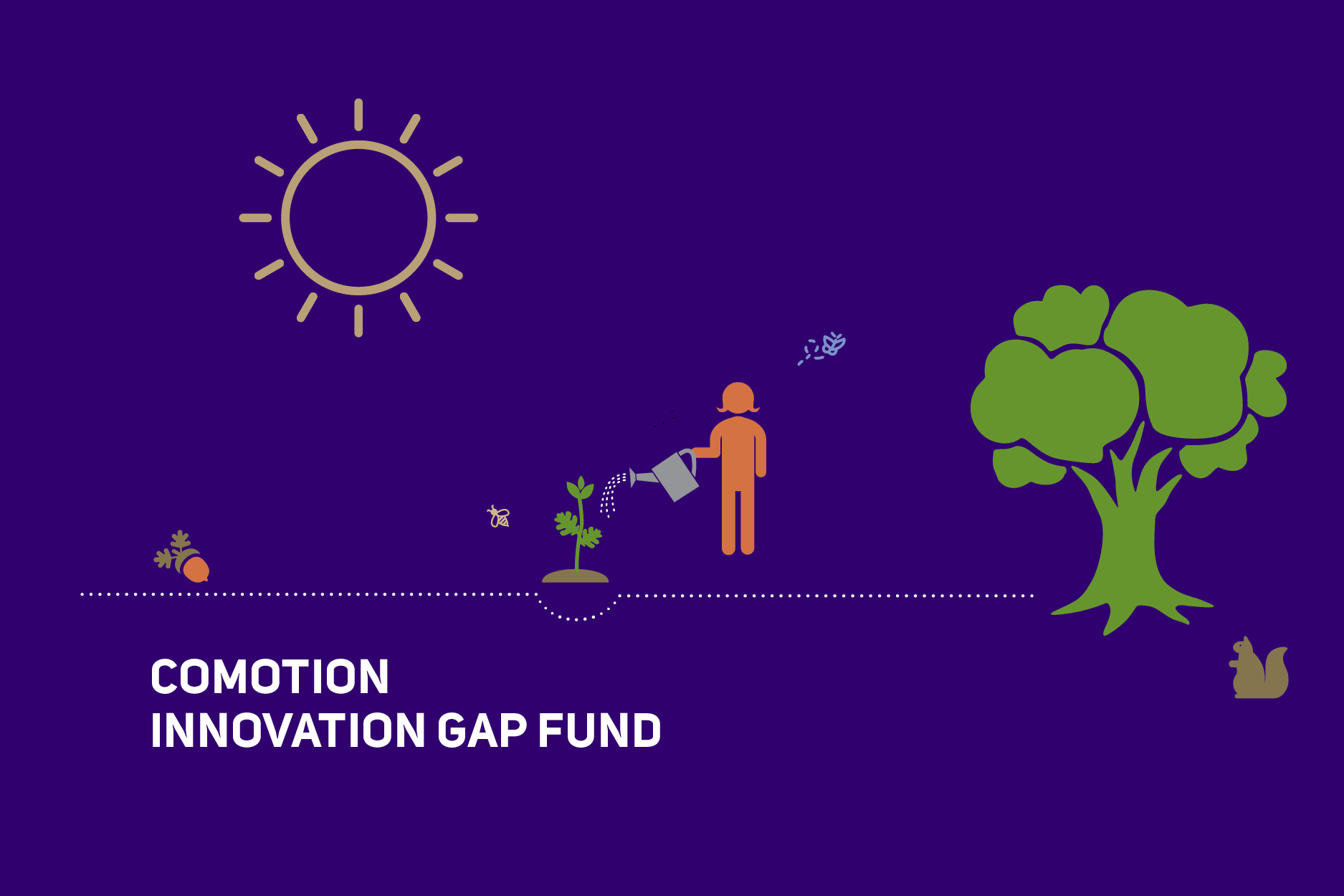
Winning projects range from a physical therapy platform using interactive gaming to a social robot designed to measure and support mental health in teens
University of Washington researcher teams presented their innovations to a panel of judges for the spring CoMotion Innovation Gap Fund, which was held during a three-day virtual event in May. The fund, which awards grants of $50,000 each, is open to any UW innovator who has disclosed their technology to CoMotion, supports research that could attract seed stage investment or make a societal impact, and which has reached the conclusion of academic research grants.
The CoMotion Innovation Gap Fund is a partnership between CoMotion and the Washington Research Foundation. This spring cycle of the Innovation Gap Fund also included funding tracks from WE-REACH, Population Health the Mobility Innovation Center (MIC) and BECU Fintech. Teams presented solutions to address challenges in the areas of smart transportation, surgery, mental health, physical therapy, stroke screening, financial tools for public health leaders and more. Winning projects plan to use funds to develop prototypes, pilot clinical trials, hire regulatory consultants and student researchers, and pay for hardware that will help researchers collect data to support applications for future funding, including SBIR and STTR grant opportunities. In one case, funds will be used to explore design and manufacturing partners who can help develop and scale a huggable, empathetic robot.
Of the winning teams, four plan to spinout startups, two plan to license technologies, and several will pursue a combination of these two commercialization paths. In addition, one team will develop a self-sustainable direct-to-user business from within the UW.
Read more below to learn which projects were awarded Innovation Gap Funds including two from the Population Health track and one from MIC. Projects from the WE-REACH track will be announced soon, so check back for updates or follow us at CoMotion on Twitter, CoMotion on Facebook or CoMotion on LinkedIn.
Team lead: Aaron Bunnell
Biofeedback-based interactive gaming platform for therapy that detects even the faintest muscle activation and shows patients their progress in real time – increasing engagement and motivation, reducing cost and improving long-term functional outcomes.
Team lead: Catherine Beni; Fiscal PI: Barclay Stewart
A cost-effective, minimally invasive diagnostic tool for targeted assessment of shock before, during, and after treatment.
…to Measure and Improve Adolescent Mental Health (Project EMAR)
Team lead: Elin Bjorling
EMAR is a school-based social robot that captures anonymous mental health data while delivering evidence- based micro interventions. It is a self-administered tool engaging to teens which does not require staff time, and utilizes end-user programming allowing teens to customize the software and manage the device, thereby increasing STEM literacy.
Also a Population Health track winner.
…for Public Health (PHAST)
Team lead: Betty Bekemeier
Software and consulting to report existing expenditures and revenues data in standardized categories for public health department leaders. Dashboard provides easy access to comparable data, and training. Consulting and training kit also offered to get leaders up to speed on PHAST-Compare.
Team lead: Kit Galvin; Fiscal PI: Michael Yost
PestiSafe-PestiSeguro is a bilingual, anywhere-anytime, mobile app that bridges the significant language disparity on farms. It gives growers and farmworkers a unique risk management tool that directly improves the health, safety, environmental, and financial risks of applying pesticides – protecting farm workers, their communities, and pollinators, while promoting a healthy environment for everyone.
Also a Population Health track winner.
Team lead: Larry Pierce; Fiscal PI: Robert Miyaoka
A nuclear medicine camera with a greatly increased efficiency factor which will simultaneously have the ability to reduce scan times, patient radiation dose, and improve image resolution leading to improved image quality as well as improved cancer-detection capabilities and tracking of neurological disease.
… (AB-PPT) for atmospheric satellite applications
Team lead: Manuel Azuara Rosales; Fiscal PI: Robert Winglee
The air-breathing, plasma-based thruster (AB-PPT) developed at the University of Washington, is a novel propulsion system capable of powering an aircraft that could act as an atmospheric satellite, at atmospheric altitudes that are currently out of reach using conventional technology.
…for Atheroembolic Stroke
Team lead: Ruiking (Ricky) Wang
Low-cost facial photography via smartphone (or digital camera) can indicate vital signs to predict the high risk of atheroembolic stroke.
Team lead: Yinhai Wang
Mobile Unit for Sensing Traffic (MUST) is a comprehensive sensing and communication device that integrates multiple sensing functions, including mobile sensing (Wi-Fi and Bluetooth), video camera, and environmental sensing modules (temperature and humidity) for improved traffic data and interactions with road users.
Also a Mobility Innovation Center track winner.
Team Lead: Lynn McGrath
Machine-learning platform for mobile pupillometry.
Researchers interested in applying are encouraged to contact our Innovation Development team to see if their project’s stage and goals make them a good candidate for the Fund.